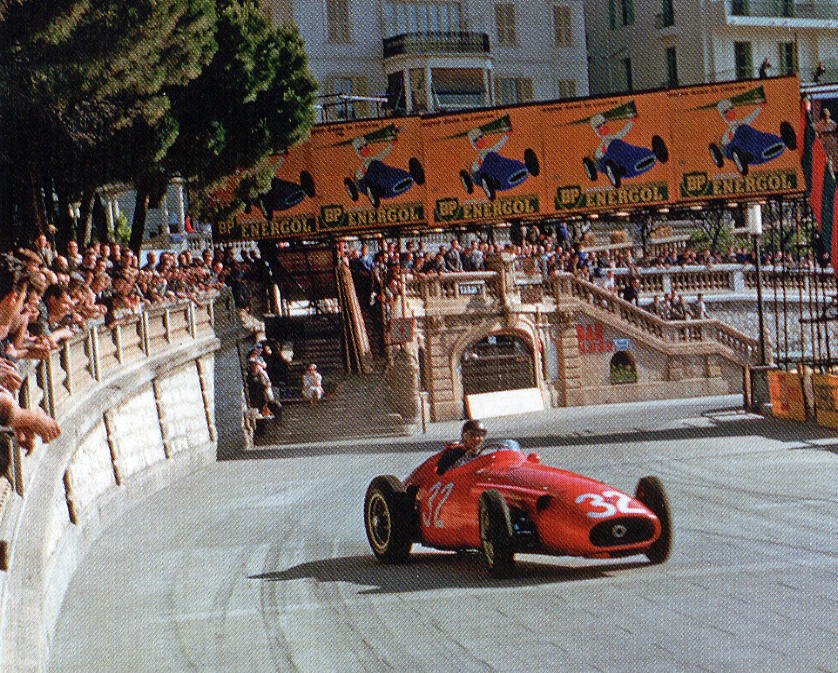The past is sort of like a foreign country: they do things differently there, including racing in Monaco. This film, believed to be from John Tate’s series A Gentleman’s Motor Racing Diary, gives us a glimpse into what motorsports were like in the decade after their revival following the Second World War.
At the 1957 Monaco Grand Prix, the Gasworks hairpin was still the first corner (and still part of the course in general...), straw bales (or nothing) protected spectators from the cars, and no one had even dreamt of building a pool in the harbor. The word rascasse conjured images of tropical reefs and fish rather than epic hangovers, and the thought of one of the more popular restaurants in Monaco to grab lunch being named after the American flag would have been dismissed out of hand, avec grand vitesse.
NOTE TO VIEWERS: 13:05 until 15:40 is a repeat of the footage that plays from 15:40 to 18:05, when the rest of the content begins.
https://www.youtube.com/watch?v=QXbQFpPrykA
Alas, no longer. The loud heroic personalities of the Grand Prix have been replaced with megaphoned PR men championing their marque’s operators. Your bartender is more likely to mix you a palatable but watery drink probably called something ridiculous like a "Screaming Orgasm," rather than an excellent dirty martini. Oh, and the kitchen is out of coq au vin, but perhaps you’d like to order fish and chips from one of the pan-lingual electronic menus on hand? The future has indeed arrived, but style seems to have gone the same way as Princess Grace.
But enough exasperation over the aesthetic of modern day Formula 1 racing. Instead, distract yourself with the amateur camerawork of John Tate’s homemade film which, with it’s attempt to keep the cars in frame, induces the very same light-headedness caused by real-life trackside constant head shaking as your eyes follow the cars flying past at breakneck speeds. Focus on the beautiful billboard typography of Bitter Campari and Castrol, the screaming song of Maserati V12s, and attempt to decipher the snide comments about the racers too.
If a news crew produced a film like this about racing today, they would probably get the sack: modern standards of reporting, this is not. Yet there are times when the setting for the races is far more enthralling than the race itself. Indeed, reading the description of Fangio’s 22nd World Championship victory may be more exciting than a modern F1 race's commentary, and with the moving colors and grainy shapes of this YouTube clip are much better than anything broadcast by Sky. The bittersweet emotion of nostalgia aroused (even for those of us who weren’t alive in 1957) is more moving than any big screen, big budget, low emotion coverage you're likely to find attached to today's racing.
Nostalgia promotes a sense of bonhomie and makes life more meaningful, it encourages us to look at the present with a intense ambition to take what was right with the past and bring it back. It is part of our shared dialectic and without documenting what matters to us in every time period, we would have fewer reference points, fewer memories, fewer reasons to strive to recapture the good bits.
In the film we see how un-slick racing was in comparison to today’s sub two-second F1 pit stops and the laissez-faire attitude towards safety. Helmet? What helmet? What we don’t see is the mayhem and debris of Moss’s crash during the fourth lap, and Collins’ crash to avoid it. We only see the aftermath of close-shaves on the circuit, like the battered nose of Trintignant’s Ferrari. In a sense, it’s much more real than what a spectator sees by watching motorsports coverage on the television. There’s a sense of staccato intensity to the proceedings—either nothing is happening and the pace is languid and calm, or it’s all "man the battle stations" and everything is moving at 100mph, just like the real event. And, just like being a spectator in person, what you see is contained by being limited to having only one set of eyeballs attached to one head, which adds to the nostalgic air of the film’s amateur but compellingly true-to-life camerawork.
On May 28 this year when you’re watching the latest running of the Monaco Grand Prix, think back to this film and wonder how much you would pay for a plane ticket to the past instead.




















































